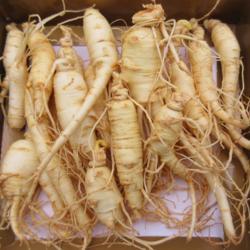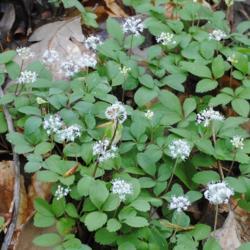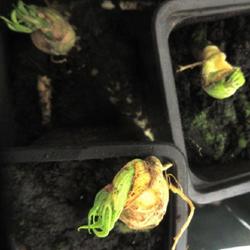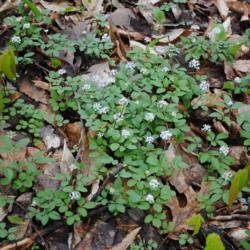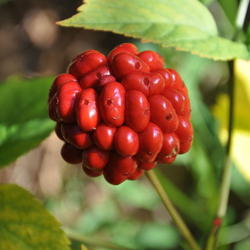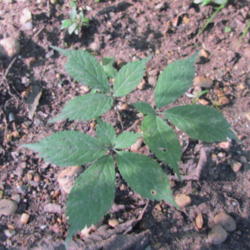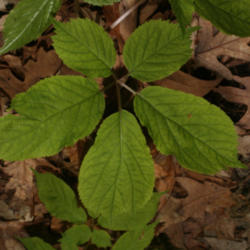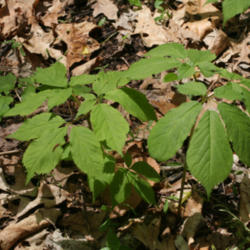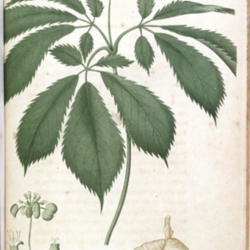| Plant Habit: | Herb/Forb |
| Life cycle: | Perennial |
| Sun Requirements: | Partial Shade to Full Shade |
| Water Preferences: | Mesic |
| Minimum cold hardiness: | Zone 3 -40 °C (-40 °F) to -37.2 °C (-35) |
| Maximum recommended zone: | Zone 8b |
| Plant Height: | 9-12 inches |
| Plant Spread: | 12-18 inches |
| Leaves: | Unusual foliage color |
| Fruit: | Showy |
| Flowers: | Inconspicuous |
| Flower Color: | Green Other: Yellow-green to greenish-white |
| Flower Time: | Summer |
| Underground structures: | Taproot |
| Uses: | Medicinal Herb Will Naturalize |
| Propagation: Seeds: | Stratify seeds Sow in situ Can handle transplanting Other info: In natural conditions, the seed may take two or three years to germinate and the plant three to four years to produce seed. The root takes at least three to four years before it is ready to harvest. |
| Miscellaneous: | Endangered |
